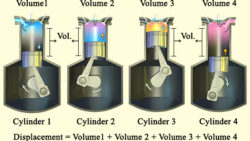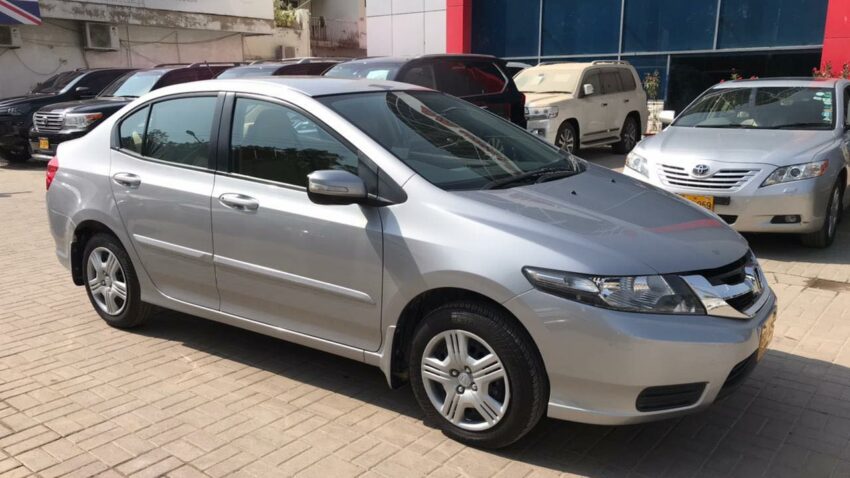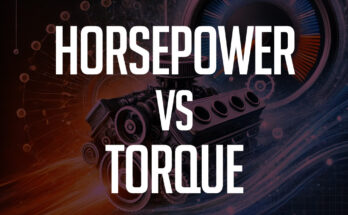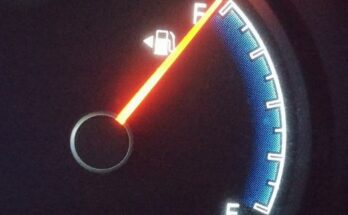When it comes to owning a car, fuel efficiency is a primary point of concern for most automobile users. With today’s ever-expanding cities, the distances we have to travel using our automobiles are on the rise. Most of us prefer a car with the best mileage, be it petrol or CNG; hence, cars with smaller engines are the ones found in the majority here. But the question arises, whether the engines with smaller displacement are really fuel efficient.
Certain perceptions developed in our market about vehicle segments & engine displacements need to be corrected considering the technology available to us today. Here, regardless of the technology, the majority of people still consider 1000cc or below engines to be fuel efficient, while 1300cc or bigger engines are fuel guzzlers, the concept is not entirely correct. The fuel efficiency of a vehicle largely depends on the power-to-weight ratio, in addition to the displacement of the engine as believed.
 The displacement of an engine is the volume of total air displaced by the pistons in all of an engine’s cylinders & is calculated in cubic centimeters or liters. The output of an engine is measured in Torque or Horsepower. Torque represents an engine’s pulling strength, while horsepower reflects the amount of sustained work the engine can perform. To put it in the simplest way, think of the engine displacement as a drink bottle, the bigger the bottle the more fluid you can put in it, and the more you are able to drink. Think of output as the amount of calories (energy) in that bottle. This should be able to help understand the basic concept of the relationship between engine displacement with the output (Torque/ Horsepower).
The displacement of an engine is the volume of total air displaced by the pistons in all of an engine’s cylinders & is calculated in cubic centimeters or liters. The output of an engine is measured in Torque or Horsepower. Torque represents an engine’s pulling strength, while horsepower reflects the amount of sustained work the engine can perform. To put it in the simplest way, think of the engine displacement as a drink bottle, the bigger the bottle the more fluid you can put in it, and the more you are able to drink. Think of output as the amount of calories (energy) in that bottle. This should be able to help understand the basic concept of the relationship between engine displacement with the output (Torque/ Horsepower).
Related: Some Interesting Car Buying/ Selling Experiences
While smaller engines may be fuel efficient in one way, in most circumstances, they require more power to move around compared to cars with bigger engines. A 660cc engine may need a lot of power from the engine when it is loaded with say 5 passengers, air-conditioning, climbing uphill, accelerating at higher speeds, etc. as compared to a larger engine. A 1300cc engine working under similar circumstances will require much less effort to do its job. This results in more wear & tear and shorter engine life of a smaller engine as compared to a bigger engine.
A study was carried out in the UK last year. While drivers are often led to believe that smaller cars can travel more miles per gallon (mpg), research by Emission Analytics found that they often use up more fuel because they generally have to work harder to accelerate. Tests on 500 vehicles, half petrol, half diesel, each driven for three hours on roads in Britain, found that the cars traveled on average 18% fewer miles per gallon than stated in manufacturers’ specifications.
It should also be kept in mind that modern-day engines, with sophisticated technology, are much more efficient in fuel consumption as compared to the smaller engines from a couple of decades ago. Manufacturers deploy a certain engine into a vehicle considering the power-to-weight ratio. Here most people still believe that the 1300cc engine offered in hatchbacks these days consumes more fuel, instead, they should be offered with 1000c engines as we are used to it. This concept is incorrect.
Related: Getting Your Vehicle Ready For Summer
The 1.3-liter engine found in a Swift is offered because it can carry its weight and perform day-to-day tasks much more easily & efficiently as compared to a 1.0-liter engine. However, this does not lead to the conclusion that engines with higher displacement are always fuel efficient. Swift with a 1.6-liter engine will always require more fuel since the power it would develop will be more than the standard needs of a hatchback of this size. Similarly, the Belta offered with a 1000cc engine is known to be sluggish in our market, as compared to the 1300cc version which has a slightly better power-to-weight ratio.
The question now comes, why don’t the car makers give us the engine with the best power-to-weight ratio only? Corolla in our market is offered with 3 different engines, 1.3, 1.6 and 1.8. It’s because manufacturers offer different trims, configurations & engine options in a single car to cater to a wide variety of customers, some of whom prefer performance, others prefer economy. Since taxation of automobiles is based on engine displacement, vehicles with smaller engine displacement get the benefit and are largely preferred especially in developing countries.
Related: What To Do If Your Car Overheats
We can calculate the power-to-weight ratio by dividing the vehicle’s horsepower by its curb weight. A higher ratio generally indicates better performance in terms of acceleration and speed. However, other factors like driving habits, vehicle maintenance, traffic conditions, fuel quality, and tire pressure also significantly impact a vehicle’s fuel efficiency. This is why, in real-world conditions, fuel consumption is not always directly proportional to engine size.

Suppose a 660cc kei car has a 45 hp engine under its hood and weighs around 800 kg, its power-to-weight ratio will be 45 divided by 800, which is 0.056 hp/ kg. In comparison, a 1300cc car with a 95 hp engine and 1050 kg body weight will have its power-to-weight ratio 95/1050 = 0.09 hp/kg. This renders it better in terms of p-t-w compared to the 660cc kei car which is perceived to be more fuel efficient.

And it depends on case to case too, for example, if you are traveling alone in your 660cc car, say while going to the office, its consumption would be better compared to when you are taking a family of 4 or 5 people along in the same 660cc car. Similarly, a 1300cc cr might not be fuel efficient when hauling a single passenger but can perform better than a smaller car if boarded with passengers. But then other factors affect fuel efficiency such as road congestion, tire air pressure, driving style, auto/ manual gearbox, etc which are covered in a separate article.
Related: The Cost of Fuel Inefficiency: How Pakistan is Losing Billions
Though we have few options in our market, it’s always good to look for a product that fits your needs rather than going after the herd and buying whatever everyone else is buying. People blindly believe that every 1000cc hatchback consumes less fuel than the 1300 hatchback and that every 1300cc sedan is more fuel efficient than a 1500cc one.
While making a car buying decision, do keep in mind that bigger engines can yield better results than a smaller engine working under stress.

A computer animation professional with over 23 years of industry experience having served in leading organizations, TV channels & production facilities in Pakistan. An avid car enthusiast and petrolhead with an affection to deliver quality content to help shape opinions. Formerly written for PakWheels as well as major publications including Dawn. Founder of CarSpiritPK.com






